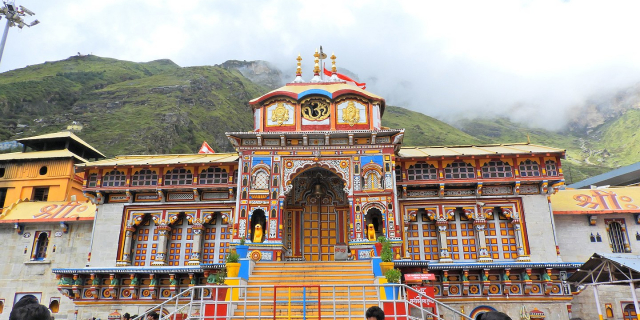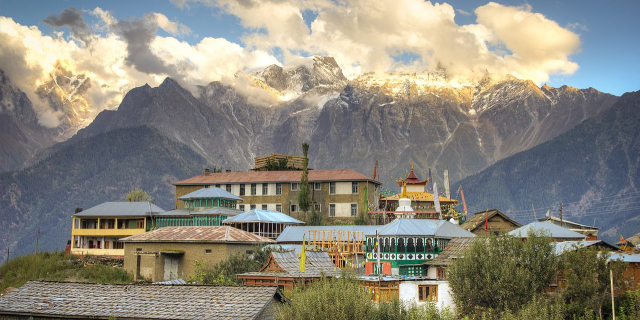केदारनाथ नगर
( Kedarnath )
Kedarnath is a town and Nagar Panchayat in Rudraprayag district of Uttarakhand, India, known primarily for the Kedarnath Temple. It is approximately 86 kilometres from Rudraprayag, the district headquarter. Kedarnath is the most remote of the four Chota Char Dham pilgrimage sites. It is located in the Himalayas, about 3,583 m (11,755 ft) above sea level near the Chorabari Glacier, which is the source of the Mandakini river. The town is flanked by snow-capped peaks, most prominently the Kedarnath Mountain. The nearest road head is at Gaurikund about 16 km away. The town suffered extensive destruction during June 2013 from the Flash Floods caused by torrential rains in Uttarakhand state.
Kedarnath has been a pilgrimage centre since ancient times.The temple's construction is credited to the Pandava brothers mentioned in the Mahabharata.[1][2] However, the Mahabharata does not mention any place called Kedarnath. One of the earliest references to Kedarnath occurs in the Skanda Purana (c. 7th-8th century), which names Kedara (Kedarnath) as the place where Lord Shiva released the holy waters of Ganga from his matted hair, resulting in the formation of the Ganges River.[3]
According to the hagiographies based on Madhava's Sankshepa-Shankara-Vijaya, the 8th century philosopher Adi Shankaracharya died near the Kedarnath mountains; although other hagiographies, based on Anandagiri's Prachina-Shankara-Vijaya, state that he died at Kanchipuram. The ruins of a monument marking the purported resting place of Adi Shankaracharya are located at Kedarnath.[4] Kedarnath was definitely a prominent pilgrimage centre by the 12th century when it is mentioned in Kritya-kalpataru written by the Gahadavala minister Bhatta Lakshmidhara.[5]




























Add new comment